Isfahan's Khaju Bridge, Everything You Need to Know
In its day, the Khaju Bridge was regarded as one of the most stunning bridges in the world, making it one of Isfahan's historical and aesthetic wonders.
One of the most pleasurable things that travelers arrange is walking across this bridge, particularly in the evening and early hours of the night.
Without visiting Khajoo Bridge, a tour to Nesfe Jahan (the half of the world; Isfahan) is not complete. In addition to its beauty, this bridge holds surprises and mysteries that compel many people to walk across it carefully and comprehend it from the bottom of their hearts.
One of the wonders of Isfahan is Khaju bridge, and we will only touch on some of its beauty and mysteries in this post by Eavar.
Khaju Bridge in Iran
East of Sioseh Pol (Siosepol Bridge), Isfahan's Khaju Bridge is regarded as one of Iran's most distinctive bridges due to its structural strength, symmetrical design, and aesthetic appeal. During the Safavid era, this bridge was regarded as one of the most magnificent in the entire globe. Its architecture and tile designs set it apart from previous bridges erected across the Zayandeh Rood (Zayandeh River). On January 6, 1932, the historical Khajoo Bridge was added to the country's list of national monuments.
Where is Khaju Bridge?
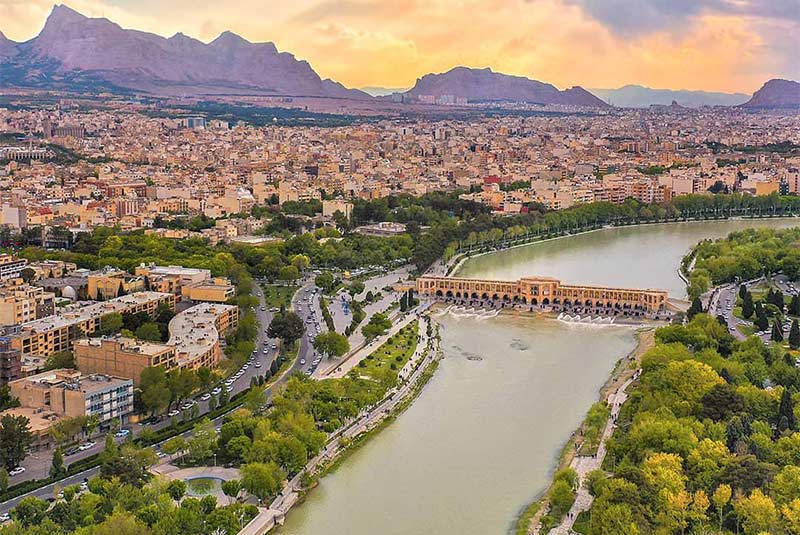
In the city of Isfahan, on the Zayandehroud River, stands the Khaju Bridge, which is situated around 1800 meters from Siosepol. This bridge is distinctive at the southern end of Chaharbagh Khaju and the eastern end of Kamaloddin Esmail Esfahani Street.
Siose-Pol Station is the nearest metro station if you want to take the subway to Khaju Bridge. From there, you can either take a two-kilometer walk or a taxi to the bridge.
Who Built Khaju Bridge?
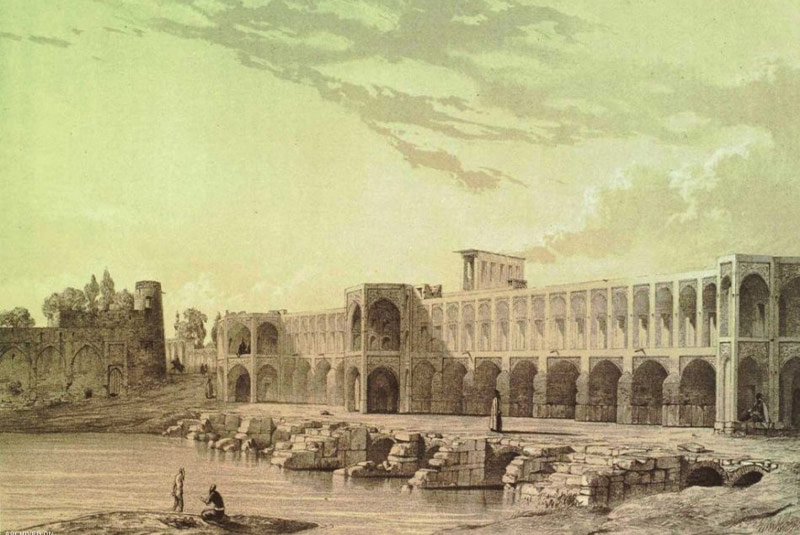
On top of the remnants of the Hasan Bey Bridge from the Timurid era, Shah Abbas II of Safavi ordered the building of the Khajoo Bridge in 1650. Traditionally, Shah Abbas II constructed this bridge so that Takht-e Foulad and Shiraz Road could be used as a communication pathway between the Khaju area and Hasan Abad Gate. It was planned that the Khaju bridge would serve as a dam on the Zayandehroud River in addition to being a bridge.
The identity of the chief architect is unknown. However, we know that a group of elite Iranian architects from the Safavid dynasty constructed this bridge.
Khaju Bridge Architecture
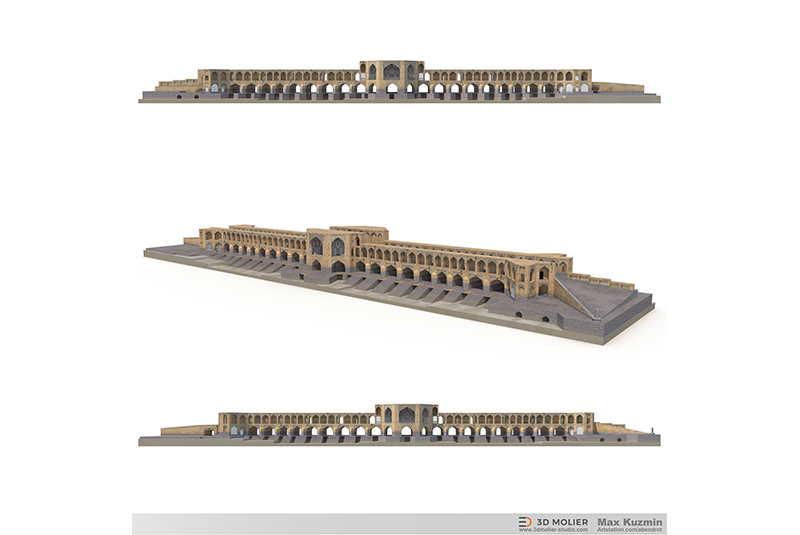
According to certain architectural sources, Khaju Bridge's role was comparable to that of Tehran's Tabi'at Bridge: rather than being only a bridge to cross, it was a lovely bridge to pause at and take in the surroundings. It is regarded as a masterpiece of Safavid-era architecture.
The hydraulic and structural design of the Khaju Bridge is entirely in accordance with the earth's natural bed. Khajoo Bridge is considered an underground water storage for Isfahan and functions as a subterranean dam against the lake. This bridge allows the river to flow upstream, raising the city's subsurface water table and downstream, it acts as a drainage for the city's soil.
To reduce the energy generated when water meets downstream of the bridge, expert Iranian builders carved apertures and passing channels into the Khaju Bridge. As a result, a stunning lake is formed, and the energy created by the water is lost. Additionally, the collision of the water's crosscurrents causes bubbles to develop, which increases the water's oxygen content and creates an environment that has proved favorable for fish breeding.
By building the Khaju bridge, adding delay facilities, and building dams, engineers of the Safavid era were able to address Isfahan's water shortage while also ensuring the settlement's sustainability and growth by cultivating the area and washing the soil.
For all the features to recur in a regular rhythm and for all the areas to have the same shape, size, and purpose, reflective symmetry and proportion were employed in the design of the Khaju Bridge.
Khaju Bridge Type
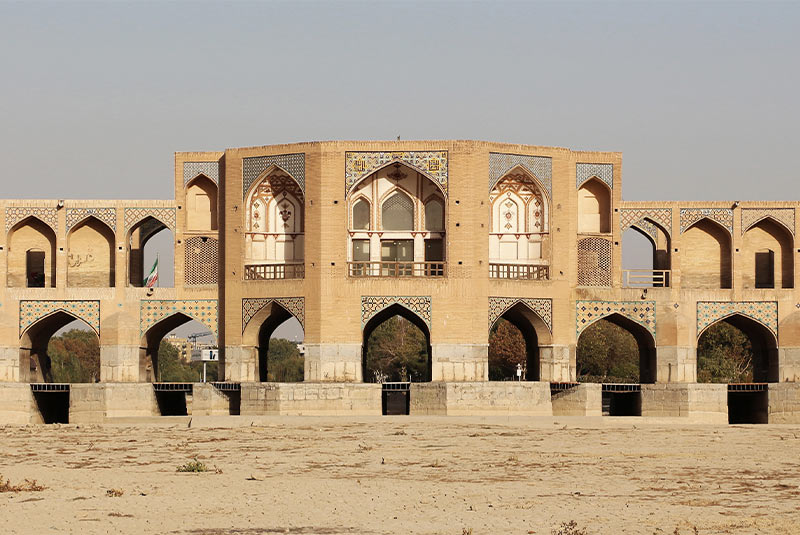
Khaju Bdrige is an arch bridge. A bridge with an upward convex curving arch to support vertical loads is known as an arch bridge. A straightforward arch bridge functions by partially shifting the weight and other pressures into a horizontal thrust constrained by the sturdy abutments on each side.
Khaju Bridge Height
Khaju Bridge's height is 11 meters, and it has 23 arches with 21 larger and 26 smaller inlet and outlet channels.
Khaju Bridge Length
Khaju Bridge is 137 meters (449 ft) long, 12 meters (39 ft) wide, and has a passageway of 7.5 meters.
Khaju Bridge Materials
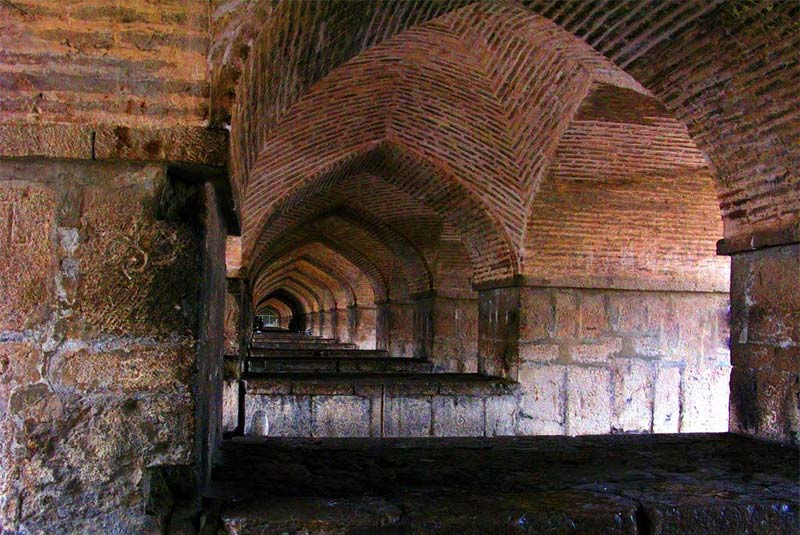
This bridge was built using brick, stone, and mortar, among other materials.
Back then, the bridge's foundation was supported by piles filled with mortar to form an impenetrable space.
How Old is Khaju Bridge?
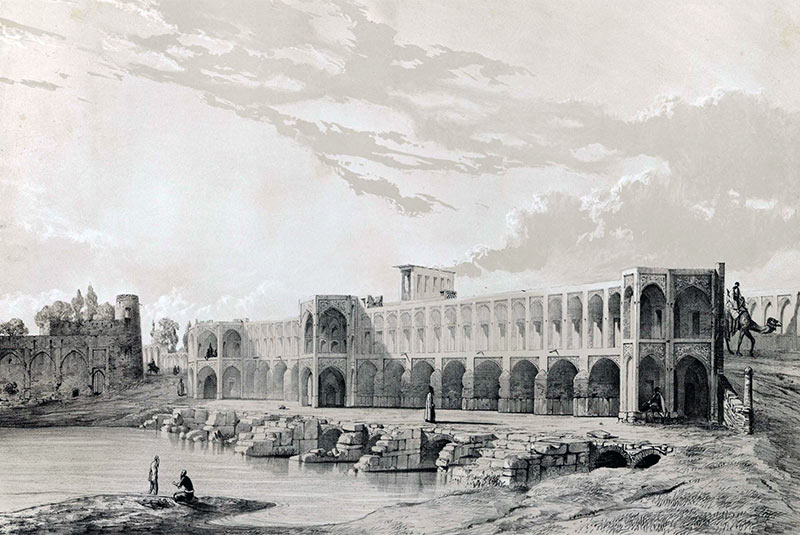
As was previously reported, Shah Abbas II commissioned the building of this bridge in 1650. As a result, it may be argued that this bridge is among the oldest and most historic in the world, having been built more than 370 years ago.
Shah Abbas thought of using a spot in the center of the bridge named Shahneshin for a brief stay with his family. This bridge has historically served as a means of transportation across the Zayandeh River as well as a place for the monarch and his entourage to observe sailing competitions, relax, and enjoy themselves.
An inscription on the bridge's southern side reveals that Khaju Bridge was reconstructed in 1911 under the rule of Nasereddin Shah Qajar.
What is the Khaju Bridge Used for?
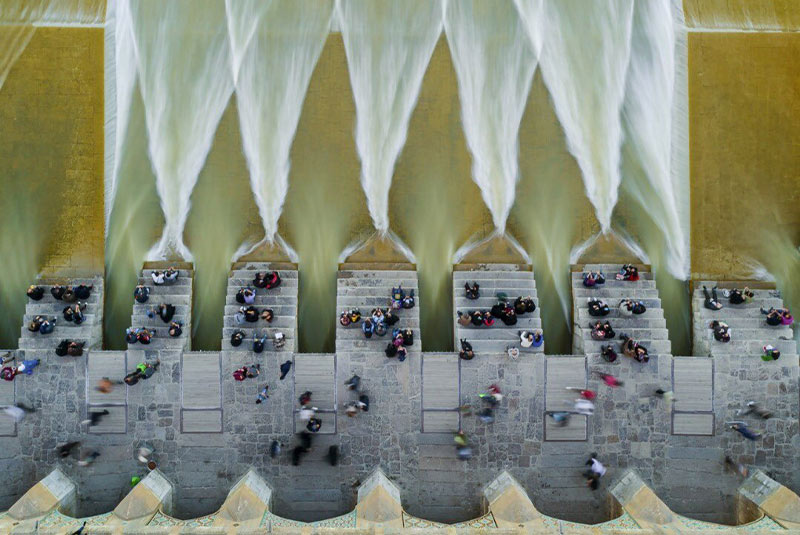
Khaju Bridge may function as a dam in emergencies. In addition to being a place to travel through and pass, it also features the Shahneshin structure in its center, which serves as the temporary residence of kings and elders.
The Khaju Bridge permits the water to be diverted to several channels and spread when a flood occurs; as a result, the flood not only does not harm the city but also fills the underground water tables. Isfahan most likely would have been devastated by several floods by this point if these canals did not exist.
Khaju Bridge Facts
Bridge Headings
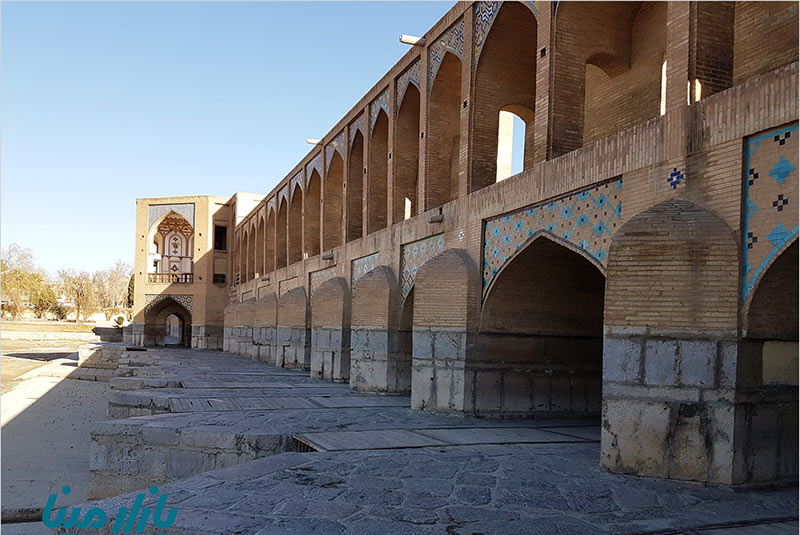
The Khaju Bridge's distinctive patterns and motifs, which have increased its charm, are one of its noteworthy features. Each of these themes is the creation of an Isfahan city artist, who has enchanted viewers for years.
Blocks on the Walls
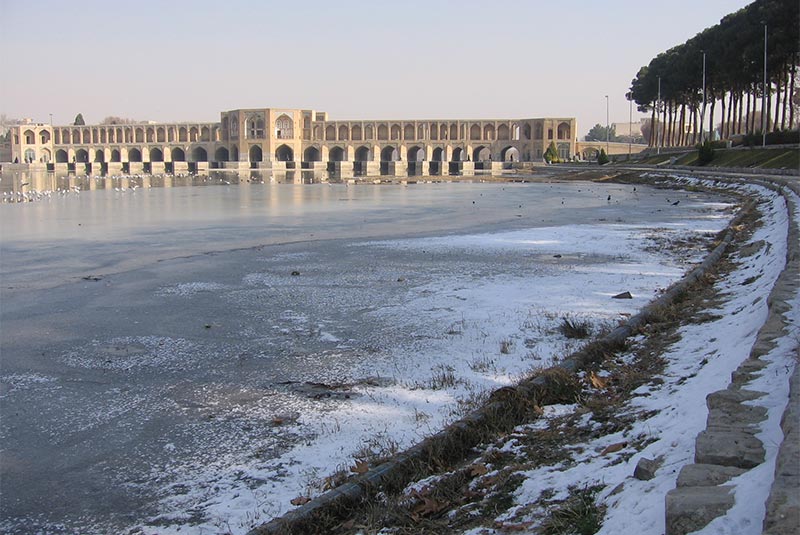
As you move through the holes beneath the bridge, you may observe stone slabs of various sizes on the walls, each with a unique symbol. These markings, according to tradition, are the autographs of the artists entrusted with mounting their slates. They could have done it so they could double-check the stones' alignment while also leaving a trace of their presence.
However, other people contend that the bridge was constructed from stones left over from the Sassanid palaces in the Jey district of Isfahan, that some of the masons who worked on it were from Greece, and that the markings on the stones are actually the Greek alphabet's letters.
Rocky Lions
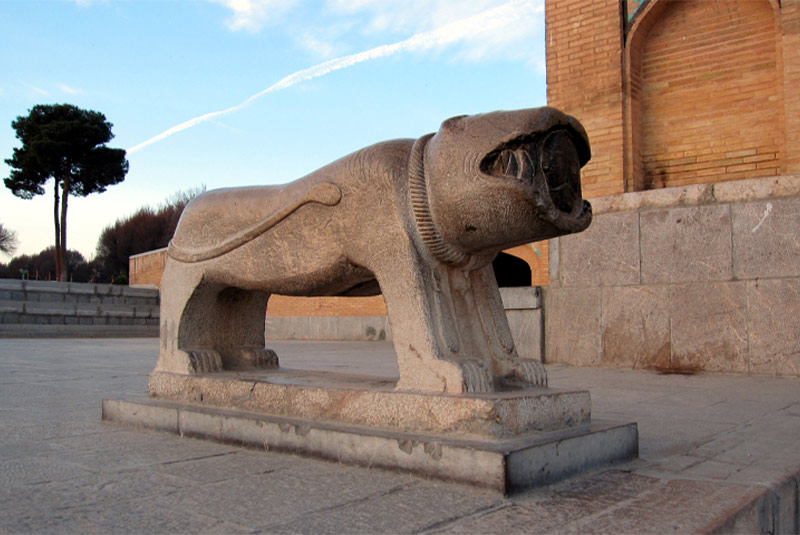
On either side of the Khaju Bridge are magnificent stone lions, and if you stand next to one of the lions and stare at the other lion's eye, it will gleam. Some believe that these two stone lions represent the valiant Bakhtiari soldiers that guard Isfahan and Zayandehroud. Interestingly, these lions have a letter etched on their bodies that appears to represent the first letter of the carvers' names. On the body of these sculptures, you can also observe emblems from ancient sports.
The Magnificent Eagle Above Zayandeh River
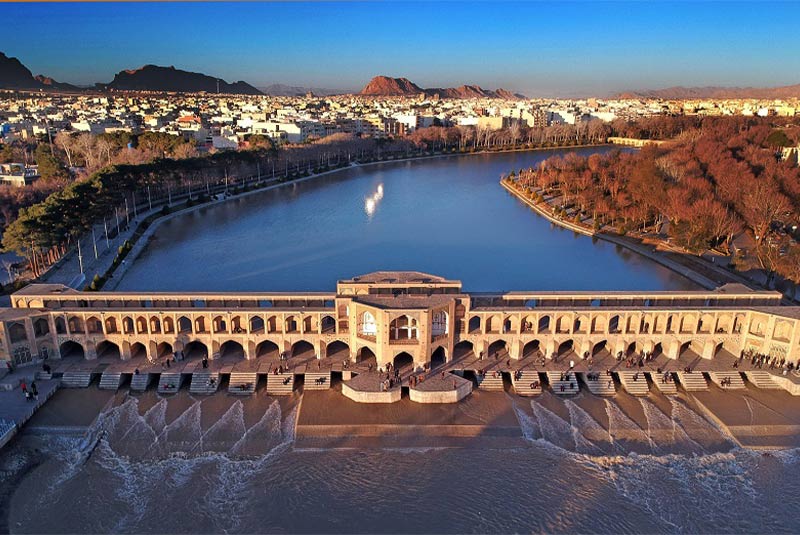
An eagle may be seen flying above the Zayandehrood River as you gaze down on Khaju Bridge from above. Eagle feathers are conjured up in mind by the congresses on the different floors of the bridge and the Shahneshin building presents the eagle's head.
Mortar
One of the innovative architectural elements of the Khaju bridge is the use of a type of mortar that hardens as more water contacts it.
Sound Absorption Arch Ceilings
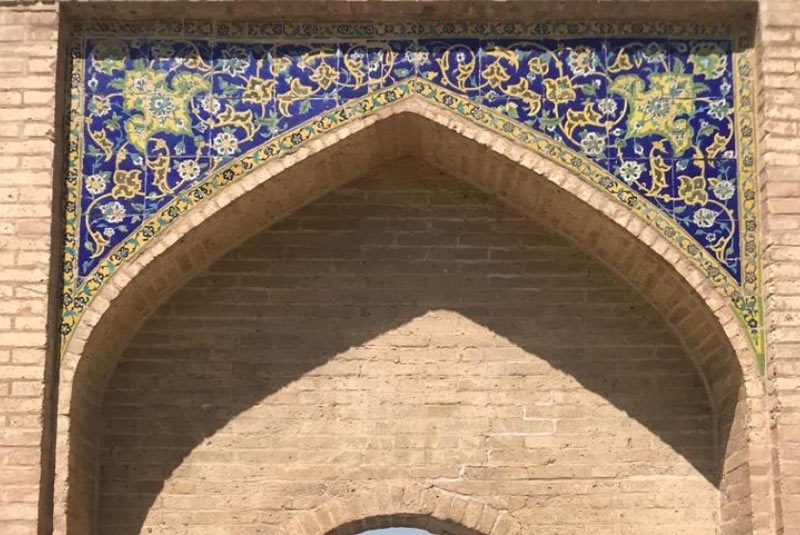
The roofs of the Khaju bridge's curving arch are created in such a manner that there are edges facing each other from the sides of the bridge. When visitors stand on the two opposite sides of the bridge and speak gently through these edges, they can plainly hear each other's voices. Most of Isfahan's historical structures exhibit this form of inventive structural engineering regarding sound absorption.
Khaju Bridge Candle
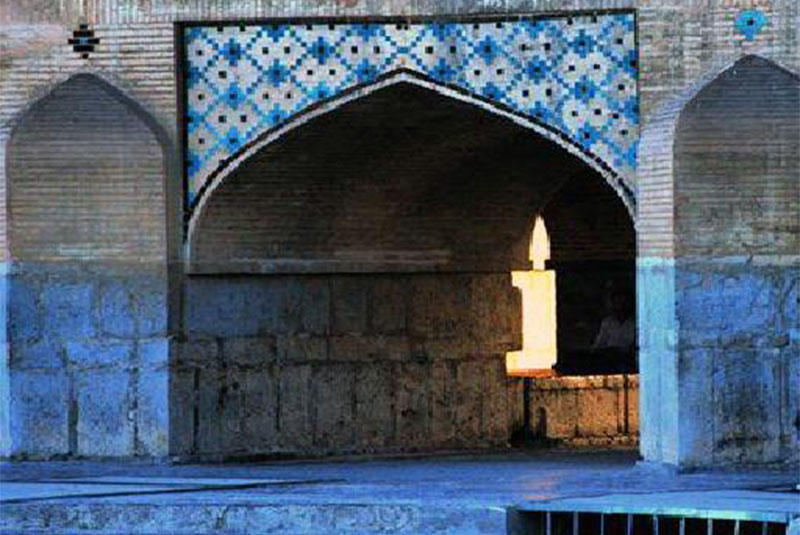
One of the intriguing features of Khaju Bridge is this candle, which can be seen if you look at the lower holes of the bridge at a 30-degree angle from the bridge's eastern side. This candle is a result of light interference in the bridge holes. This candle is quite impressive and lovely, especially at sunset.
Why is Khaju Bridge Famous?
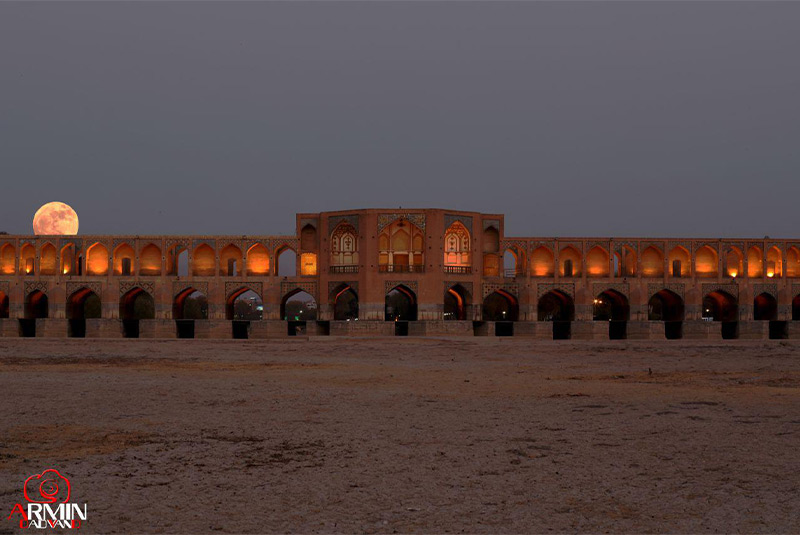
The tiling and painting embellishments, as well as the ability to transform the bridge into a dam, set the Khaju Bridge apart from other Isfahan bridges and the Siose Pol bridge.
The Khaju bridge's capacity as a dam resulted in the creation of a lake behind the bridge, which offered a distinctive environment and was utilized for boating. In addition, its water was used to irrigate the agricultural regions downriver during the summer months when water levels were low. The water in the city's wells and near the river also increased due to this lake.
Another distinctive aspect of Khaju Bridge is the unique structure that stands out in the center of the bridge. It was employed as a temporary palace for the royal family of Shah Abbas Safavi, as we previously said.
Additionally, the Khaju bridge's span count and design vary greatly from those of any other bridge.
Khaju Bridge, one of Isfahan's promenades, will provide a lovely experience for you. Everything works together to create a great night for you as you enjoy the sound of the water flowing and the lovely illumination of the bridge.
The residents of the city also seize the opportunity, particularly the long summer evenings, to unwind with their loved ones close to the Khaju Bridge. This is especially true considering that some of them create a pleasurable atmosphere by singing. Khaju Bridge's surrounding grassy area is a nice spot to stroll and relax.
We discussed a few of these facets of Khaju Bridge's beauty and allure. You should be aware that this bridge is one of the most amazing bridges in the world in terms of the architecture and art employed in its creation. We did not discuss much about this bridge's unique architectural and technical advances since it would have made the content too specialized.
Attractions Around Isfahan's Khaju Bridge
Being able to see many attractions at once is one of the finest travel planning strategies. It is especially true when visiting a city like Isfahan, which is brimming with tourist sites. No matter how often you visit this city, you will never have enough time to see all its attractions.
Therefore, it is best to be informed of the nearby sites before planning a trip to Khaju Bridge so that you may include them in your itinerary.
The attractions and sites around the Khaju Bridge will be described in the sections that follow, so you may visit them as well as the bridge.
Naqsh-e Jahan Square
This plaza, among the biggest in the world and on the UNESCO World Heritage List, is a masterpiece of Iran. You can see the well-known Isfahan attractions Ali Qapu Palace, Sheikh Lotfollah Mosque, Shah Mosque, and Sardar Qeisarieh on Naqsh-e Jahan Square.
Siosepol Bridge
One of Isfahan's most significant and historical landmarks, as well as one of the city's most well-known resorts, is Sioseh Pol Bridge. This priceless work, which is included among Iran's National heritages, is a masterpiece from the Safavid era.
Hasht Behesht (Eight Paradises) Palace
One of the gorgeous palaces from the Safavid era, it astonishes everyone who sees it with its unique architecture and decorative elements.
Chehel Sotoon Palace
One of Isfahan's most famous attractions, this palace is regarded as a prime example of fine Iranian art, and its garden is designed in the manner of well-known Iranian gardens.
Isfahan Flower Garden (Baq-e Gol)
This floral garden is a unique attraction in Isfahan that gives you a chance to learn about and enjoy flowers and other plants in a nice environment.
Bottom Line
We made every effort to fully disclose the mysteries of Khaju Bridge in this article and give you the best introduction to this Safavid-era Iranian architectural marvel. There are many more treasures on this bridge that have yet to be uncovered and can be found with time. Enjoying the Iranian civilization as it is represented in this majestic edifice is what matters.
If you've ever been to Isfahan and seen this magnificent bridge up close, share your thoughts in the comments below.
We hope you found this post helpful, and we also wish you an excellent journey to Isfahan (a city where they say the wonders of half the world reside).


Comment
Leave a Comment